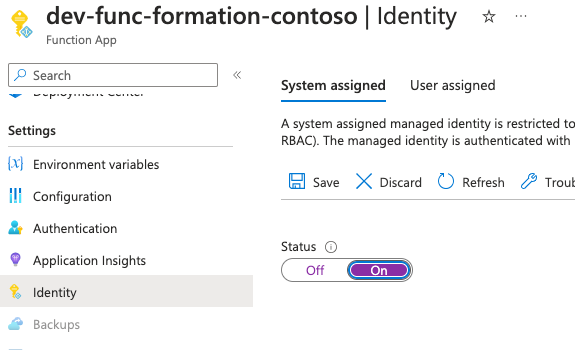When it comes to centralizing and managing configuration settings for distributed applications, Azure AppConfiguration is an indispensable service. It provides a unique location to store and manage configuration settings and feature flags. In this article, we will explore how to securely access these configurations using Azure Functions coupled with Managed Identity authentication, thus eliminating the need to manage credentials in our code or configuration.
Azure Functions allow execution in response to various events, but to access Azure AppConfiguration, we need to establish a secure connection. Using Managed Identity allows us to do this securely and without explicit management of API keys or secrets. To configure our function for the use of Managed Identity, here are the steps to follow:

2. Configure RBAC permissions so your Managed Identity can read settings from the Azure AppConfiguration (the App Configuration Data Reader role is sufficient).

3. Use the Azure SDK to access AppConfiguration in your code. Here is an example in C#:
var builder = new ConfigurationBuilder();
builder.AddAzureAppConfiguration(options =>
{
var credentials = new ManagedIdentityCredential();
options.Connect(new Uri("<Your-App-Configuration-Resource-URI>"), credentials);
});
var configuration = builder.Build();
string myConfigValue = configuration["MyKey"];
This code illustrates how to initialize the connection to Azure AppConfiguration using Managed Identity.
4. Test your function to ensure that the configuration keys are retrieved correctly.
In addition to securing access, it is important to follow best practices for optimal maintenance and scalability. Make sure to manage exceptions in your code to handle cases where the configuration cannot be loaded. Also, use Azure Monitor to track the performance of your functions and access to configurations.
With Azure Functions and Managed Identity, you can access Azure AppConfiguration in a secure and scalable manner. This simplifies the code, strengthens security, and promotes best practices for cloud-native development.
Additional Documentation and Resources:
By following the steps and practices described in this article, you can simplify the management of configurations and strengthen the security of your cloud applications.